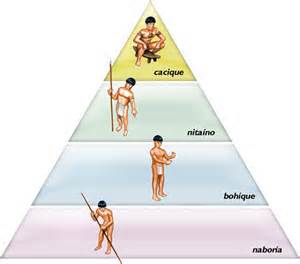 The Cacique: The Cacique had many responsibilities throughout the village. He, or she, presided over a village and organized daily activities. The Cacique was responsible for the storage of surplus commodities, organizing public feast and dances, directed singing, hosted other villages, and was responsible for public forms of transportation. This position had the power of life and death over others in the village. In addition the Cacique had the most powerful Zemí (a deity or ancestral spirit held within a sculptural object) and supervised worship amongst the group.
The Cacique: The Cacique had many responsibilities throughout the village. He, or she, presided over a village and organized daily activities. The Cacique was responsible for the storage of surplus commodities, organizing public feast and dances, directed singing, hosted other villages, and was responsible for public forms of transportation. This position had the power of life and death over others in the village. In addition the Cacique had the most powerful Zemí (a deity or ancestral spirit held within a sculptural object) and supervised worship amongst the group.
Nitanos: The Nitanos were nobles and warriors who participated and voted in the village councils concerning village matters. They were responsible for determining local boundaries and fishing and hunting rights.
Behique: The Behique (medicine person or shaman) guided the village’s religious activities and performed sacred rituals. They were responsible for taking spiritual quests to the lower and upper worlds to learn the will of the Zemi and to foretell the future.
Naboria: These were the common people who were lifelong serfs. These people did not have personal property rights and ownership, but labored in the fields, fished, and hunted.
